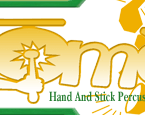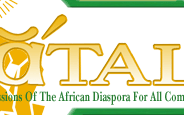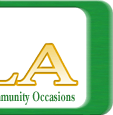| |
|
|
|
|
|
|
|
|
|
|
|
|
|
| |
|
||||||||||||
| |
|
|
|
|
|
||||||||
 |
 |
 |
 |
|
|
||||||||
| |
|
|
|
|
|
|
|
|
|
||||
| |
|
|
|||||||||||
| |
|
||||||||||||
Education Programs
The photographs displayed in this exhibit capture the essence of Dromatala's experiences at the "Festival del Caribe" and the "Festival del Fuego" in Santiago de Cuba in July of 2001. The exhibit is organized into five general categories. The pictures show:
An oral presentation about the group's journey to Cuba will be given as a supplement to the exhibit. Presenters will discuss the people and culture of Cuba, the festival performers, and Dromatala's experience as the only African American representatives to perform at the festival. The drummers will also talk about the significance of music and dances that were performed. A demonstration of the music will be included in the discussion, along with an analysis of the similarities and differences that exist between the European musical aesthetic and the traditional West African musical aesthetic. This demonstration of the sounds of traditional West African music will be followed by an introduction to the concept of "Call and Response." "Call and Response" is a concept that has been described as the foundation of African artistic expression, both on the continent and in the Diaspora. It is the notion that everything that happens in African music and dance is based on a point/counterpoint interaction. Specific tones and inflections in the music cause dancers to move in a certain way, and movements seen in the dance can also be heard in the music. The presenters will explore the principles of "Call and Response," focusing on how dancers must listen and respond to cues in the music. This will help prepare participants for part two of the workshop series.
back to top
Part Two: Application Through Movement
Part two of the program will be presented in the form of a dance class. The class will focus on the fundamentals of traditional West African movement and music. Students will be introduced to the basic structure of West African rhythms, and experience the interdependent nature of African based music and dance. They will also learn about the concept of the "break", the signal within a rhythm that denotes a change of tempo, and tells both musicians and dancers when to start or stop. The break is an important line of communication between musicians and dancers. Participants will learn how to discern the pattern of the break within a rhythm in order to play it and to dance to it. They will also be introduced to the instruments that make up the djimbe orchestra.
The class will feature music, movements, and songs from Cuba and from West Africa. It is a studio session that involves singing, dancing and playing instruments. While it will be necessary to talk at some points, the bulk of this workshop will be experiential. This class will be movement intensive, geared toward those who dance and those who play live music for dance classes. The objectives of the session are:
Participants should leave with a better understanding of African rhythms and songs, and an appreciation for the connection between African and Latin American cultures, and a better understanding of the similarities between American music and traditional African rhythms and dance.
back to top
Part Three: Performance / Lecture Demonstration
The culminating performance will serve as an opportunity for participants to synthesize the knowledge and information they have gained throughout the course of the workshop. This performance lecture will feature many of the musical selections performed by Dromatala at the festivals in Santiago de Cuba. Group members will discuss and demonstrate similarities and differences between the way that African Americans and Afro-Cubans play the same traditional African rhythms. The performance will also feature a sampling of Dromatala's original music as an illustration of the evolution of traditional African music throughout the Diaspora. Dromatala's distinctive style represents a fusion of traditional rhythms from Guinea, Mali, Senegal, and Gambia, layered with Afro-Cuban Latin undertones and Jazz and R&B funk of African-American culture.
This performance will be interactive, and audience members will be expected to participate by singing songs, dancing, or clapping out rhythms. In traditional African cultures, dance and music "performances" tend to be participatory in nature, with the role of the audience and performer interchangeable. Dromatala seeks to extend understanding of traditional African cultures by immersing this audience in this type of environment. Throughout the performance, participants will be encouraged to get involved in their own way. Audience members will also have opportunities to ask and answer questions about the information that has been presented over the course of the workshop.
©
2002 Dromatala